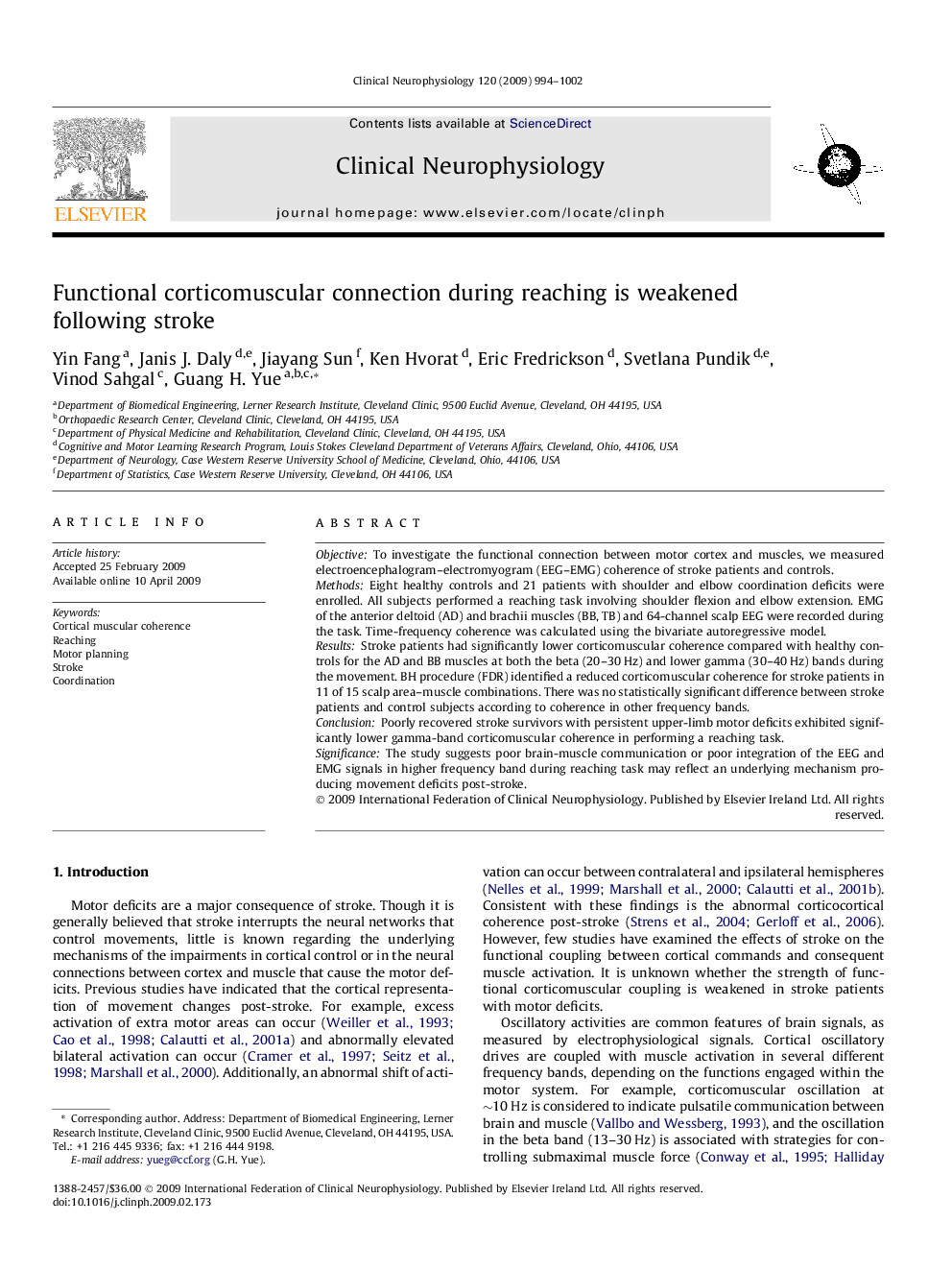| کد مقاله | کد نشریه | سال انتشار | مقاله انگلیسی | نسخه تمام متن |
|---|---|---|---|---|
| 3046059 | 1185035 | 2009 | 9 صفحه PDF | دانلود رایگان |

ObjectiveTo investigate the functional connection between motor cortex and muscles, we measured electroencephalogram–electromyogram (EEG–EMG) coherence of stroke patients and controls.MethodsEight healthy controls and 21 patients with shoulder and elbow coordination deficits were enrolled. All subjects performed a reaching task involving shoulder flexion and elbow extension. EMG of the anterior deltoid (AD) and brachii muscles (BB, TB) and 64-channel scalp EEG were recorded during the task. Time-frequency coherence was calculated using the bivariate autoregressive model.ResultsStroke patients had significantly lower corticomuscular coherence compared with healthy controls for the AD and BB muscles at both the beta (20–30 Hz) and lower gamma (30–40 Hz) bands during the movement. BH procedure (FDR) identified a reduced corticomuscular coherence for stroke patients in 11 of 15 scalp area–muscle combinations. There was no statistically significant difference between stroke patients and control subjects according to coherence in other frequency bands.ConclusionPoorly recovered stroke survivors with persistent upper-limb motor deficits exhibited significantly lower gamma-band corticomuscular coherence in performing a reaching task.SignificanceThe study suggests poor brain-muscle communication or poor integration of the EEG and EMG signals in higher frequency band during reaching task may reflect an underlying mechanism producing movement deficits post-stroke.
Journal: Clinical Neurophysiology - Volume 120, Issue 5, May 2009, Pages 994–1002